- Home
- Shinnyoji Temple
Shinnyoji Temple
A sub temple of Shokokuji temple
A private Zen temple (not open to the public) that has an elegant Japanese garden.
In the autumn, visitors will enjoy the colored leaves. Visitors will be able to experience the real Zen by placing themselves in a life of Zen Buddhist monk.
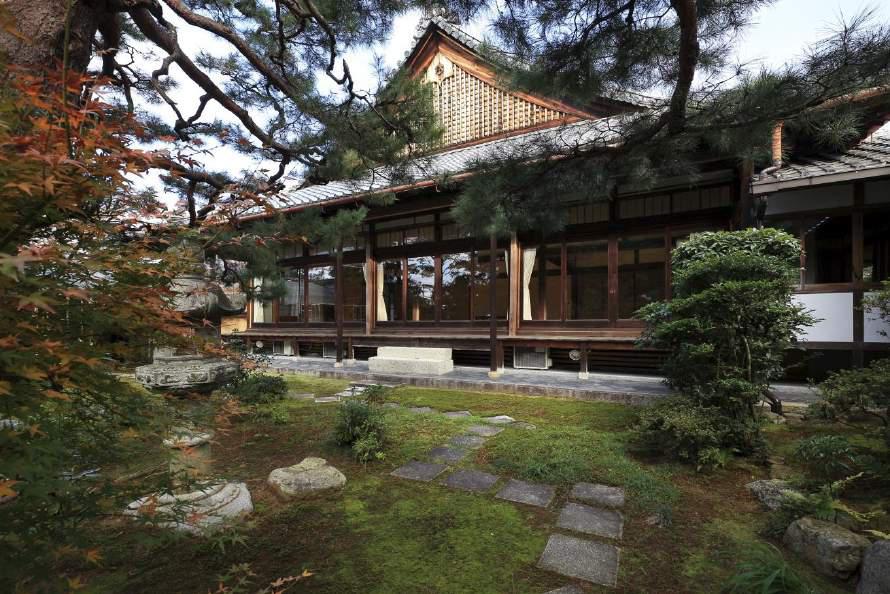
Room information
69.43 sq meter / Bathroom / Bathtub/shower / Air conditioning / Futon, Japanese-style mattress (No bed) / Free WiFi
Amenities:
Humidifier / Towel and toothbrush
* This plan is only one party a night. (Maximum number of people is 5)
Dinner and breakfast at the nearby Japanese restaurant are included.
An interpreter will accompany the guests

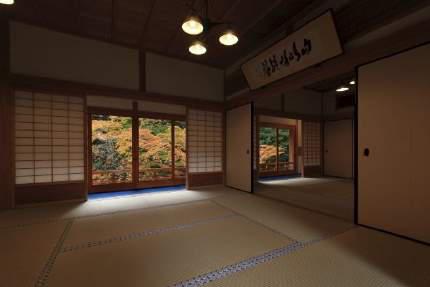
Schedule
[First day]
1:30pm Depart from Kyoto station or Hotel
2:30pm Exploring the nearby area
5:00pm Tea ceremony and a lecture about the history of the temple
6:30pm Dinner Japanese
*Since the schedule above is tentative, times and activities may change.
[Second day]
7:00am Experiencing Zazen
8:00am Breakfast
9:00am Free time
11:30am Arrive at Kyoto station or Hotel
*Since the schedule above is tentative, times and activities may change.
Points of Interest
Japanes garden
Since the temple is not open to the public, its garden is not so famous, yet, there is a beautiful Japanese garden at Shinnyoji temple.
The garden shows beautiful colored leaves in autumn. During the season, ceiling of the room becomes salmon pink color because of sunshine reflected by colored leaves.
Â
Â
Tea ceremony
A Zen Buddhist monk directly serves guests tea. The guests will be able to have an private experience of traditional tea ceremony, enjoing the luxurious view of a study room.
(Japanese traditional architecture called Sho-in)
Â
Â
Zazen
Zazen is one of the basic Zen practices aiming of one's mental concentration, by sitting in the right posture. Guests experience this practice by learning from a Zen Buddhist monk.
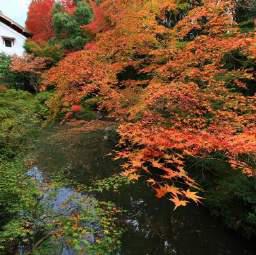

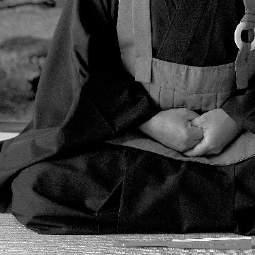



Egami, Shoudo (Chief priest)
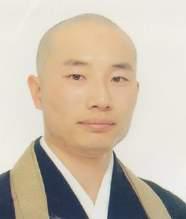
Western Kyoto has a charm and urbanity that comes about due to its calm residential neighborhoods. Embedded on one of the smaller streets is Shinnjoji Temple. Visitors approach the inner courtyard from the sidewalk by way of a long stone path and in view of plum and cherry trees.
Once inside the quarters where guests meet with the monk and also reside during stays, the view is of a private garden so picturesque as to seem cinematic. A small white heron may land. Koi are seen beneath the surface of the pond. The rooms have new tatami mats and are surrounded by long, blue carpeted hallways that lead to a room where zazen can be practiced. It is silent here.
“I have been here forty years,” says Shodo Egami. He is the monk who attends to guests. “I was born here, my father was a monk before me.” Guests who stay here learn zazen, of course, and have discussions with Mr. Egami. He is as shy and playful as he is erudite. “You have to free your mind,” he says. “To have no mind. To experience.”
Egami-san takes guests to the great Buddha Hall in the compound, which is an enormous, two-story building that houses centuries’ old statues and artifacts. One of the statues is of Mugai-Nyo-Dai, a nun who lived in the thirteenth century, a figure so important to female participation in Zen Buddhism that her work has caught the interest of international scholars. But obeisance is not the end point. “Zen is a religion of experience,” says Mr. Egami. “You have to start to continue.”
History
Shinnyo-ji was founded in 1342 by the eminent Zen master Musō Soseki, with the support of Ashikaga Tadayoshi (brother of the shogun Ashikaga Takauji) and Kōno Moronao (Takauji’s chief deputy). It is presently associated with the Shōkoku-ji school of Rinzai Zen Buddhism, and has close historical ties with Rokuon-ji (the Golden Pavilion) and Jishō-ji (the Silver Pavilion). At its height, Shinnyo-ji possessed six subtemples and, as part of the Five Mountains and Ten Monasteries system, was counted among the top-ranked Zen temples of Kyoto.
However, a serious fire in 1461 and further damage during the Ōnin War (1467-77) left Shinnyo-ji in near ruins. Only in 1499 did restoration commence with construction of a new hōjō (main hall) and other buildings. The retired emperor Go-Mizunō financed a new hattō (Dharma hall) in 1656, and in 1662 donated sacred images of Shakyamuni, Mahakashyapa, and Ananda from the imperial palace. Among the buildings constituting Shinnyo-ji today are a kyakuden (guest hall), shoin (reception hall), chashitu (teahouse), and hattō (in which are found images of the Zen masters Musō Soseki and Mugaku Sōgen, and of several imperial princesses who ordained as nuns). The buildings are surrounded by large gardens graced with two ponds, expanses of green moss, and many stately trees.
